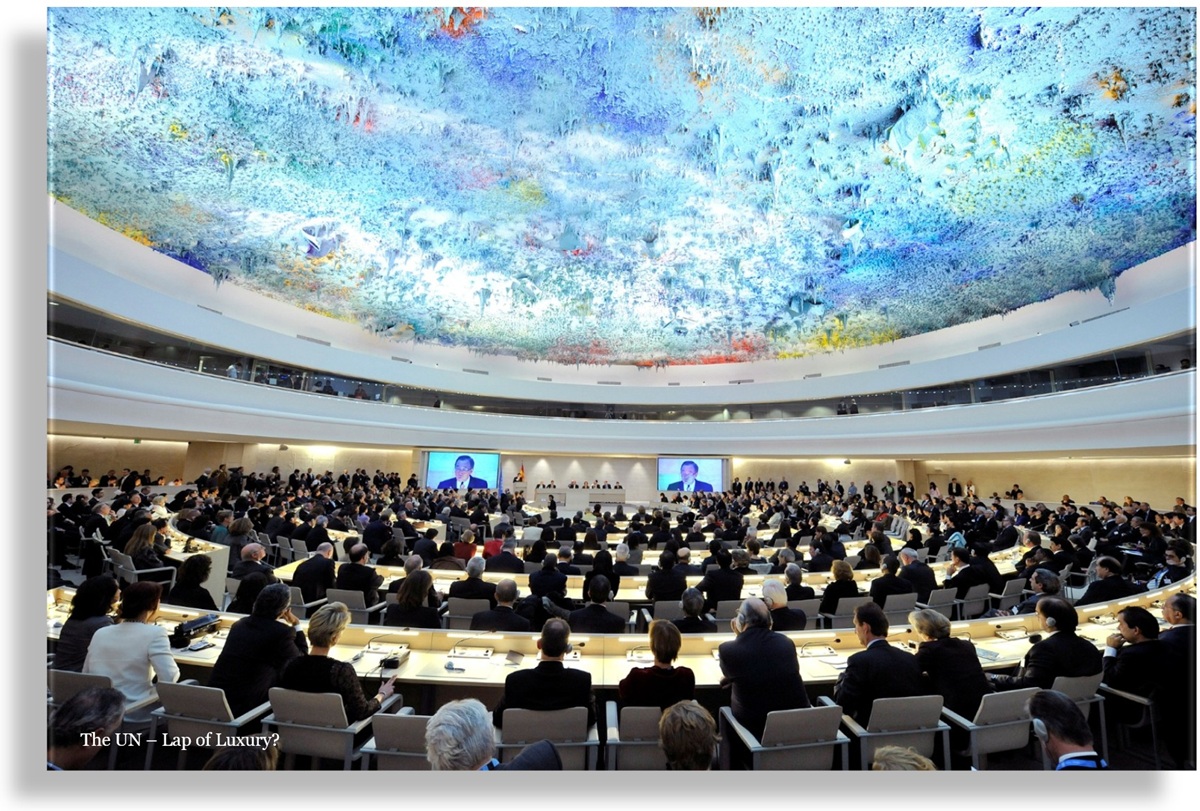
The Evolution of Co-Creative Leadership
The Evolution of Co-Creative Leadership
Traditional leadership models are no longer sufficient to meet modern workplace demands in an era of rapid change and interconnectedness. Co-creative leadership has emerged as a transformative paradigm, shifting from hierarchical structures to more collaborative and participatory approaches. At its core, co-creative leadership embodies the principles of empowerment, inclusivity, and trust, creating an environment where every team member feels valued, respected, and empowered to contribute their unique insights and ideas.
Unpacking the Essence of Co-Creative Leadership
At the heart of co-creative leadership lies a deep commitment to fostering a culture of collaboration and inclusivity. Unlike traditional leadership models, which often prioritize authority and expertise at the top, co-creative leadership recognizes the value of diverse perspectives and encourages participation at all organizational levels. Leaders act as facilitators, guiding and empowering their teams to collectively navigate challenges, solve problems, and drive innovation.
Co-creative leadership is rooted in the belief that the collective intelligence of a team is greater than the sum of its parts. By embracing diversity and inclusivity, co-creative leaders can harness the full potential of their teams, leveraging a wealth of perspectives and experiences to drive creativity, innovation, and excellence. Through open dialogue, active listening, and mutual respect, co-creative leaders create an environment where every voice is heard and valued.
Critical Principles of Co-Creative Leadership
Several fundamental principles underpin the practice of co-creative leadership:
Driving Organizational Success through Strategic Vision and Effective Communication
Senior leadership is pivotal in any organization, serving as the guiding force behind strategic decision-making and organizational direction. Their significance cannot be overstated, as they are tasked with setting the course for the entire organization and inspiring employees to achieve collective goals. To excel in their roles, senior leaders must understand the business landscape, think strategically, and make informed decisions that align with the organization’s objectives.
At the heart of effective senior leadership lies the art of communication. Senior leaders must adeptly navigate complex communication channels, effectively conveying their vision, goals, and expectations to employees and stakeholders. Clear and concise communication is paramount, as senior leaders are often inundated with a myriad of responsibilities and do not have the luxury of time to decipher lengthy or convoluted reports. Therefore, it is imperative to distill information into its most salient points, ensuring senior leaders can access the critical insights needed to drive informed decision-making.
Furthermore, communication with senior leadership must be conducted professionally and respectfully. Senior leaders occupy positions of authority and influence within the organization, so they expect a certain level of decorum and professionalism in all interactions. Addressing senior leaders by their appropriate titles and refraining from using informal language or slang demonstrates respect and reverence for their position, fostering a positive and productive working relationship.
To effectively communicate with senior leadership, it is essential to tailor communication strategies to their preferences and priorities. Some senior leaders prefer succinctly written updates, while others prefer face-to-face meetings or presentations. Understanding senior leaders’ preferences and communication styles allows for more meaningful and impactful interactions, ultimately facilitating greater alignment and collaboration.
Effective communication with senior leadership is essential for individual success and the organization’s overall success. By fostering transparent and open communication, employees can cultivate more robust relationships with senior leaders, gain valuable insights into organizational strategy, and actively contribute to achieving shared goals. As such, investing in effective communication practices with senior leadership is not just a professional imperative but a strategic imperative that drives organizational success and fosters a culture of collaboration and innovation.
Collaboration – The Cornerstone
In co-creative leadership, collaboration stands as a fundamental pillar, underscoring the belief that diverse perspectives and experiences are essential ingredients for driving innovation and problem-solving. Co-creative leaders champion collaboration and teamwork, understanding that synthesizing varied viewpoints leads to more prosperous and creative outcomes. By creating opportunities for cross-functional collaboration, leaders enable the sharing of ideas, knowledge, and resources across different departments and disciplines.
At the heart of co-creative collaboration is recognizing that no individual possesses all the answers. Instead, collective intelligence emerges through the collective efforts of a diverse team working together towards a common goal. Co-creative leaders actively cultivate an environment where team members feel empowered to share their ideas and perspectives, knowing their contributions are valued and respected. Through open dialogue, brainstorming sessions, and collaborative projects, leaders foster a culture of collaboration that encourages experimentation, innovation, and continuous improvement.
Moreover, co-creative leaders understand the importance of breaking down silos and fostering connections across departments and teams. They create opportunities for cross-functional collaboration, bringing together individuals with different skill sets, backgrounds, and perspectives to tackle complex challenges and drive organizational success. By encouraging the sharing of ideas and knowledge, co-creative leaders enable teams to leverage the organization’s collective wisdom, leading to more informed decision-making and creative problem-solving.
In addition to facilitating collaboration within the organization, co-creative leaders also recognize the value of external partnerships and alliances. They actively seek collaboration opportunities with external stakeholders, including customers, suppliers, and industry partners. They realize that diverse perspectives and insights from outside the organization can enrich the creative process and drive innovation. By fostering an internal and external collaboration culture, co-creative leaders position their organizations for success in an increasingly interconnected and competitive business landscape.
Cultivating Diversity and Respect in Co-Creative Leadership
Within co-creative leadership, inclusivity is a cornerstone principle, embodying the belief that diverse perspectives, experiences, and backgrounds are vital catalysts for innovation and success. Co-creative leaders prioritize inclusivity, creating an environment where everyone feels welcomed, valued, and respected for their unique contributions. They understand that fostering a culture of inclusivity is morally imperative and essential for driving creativity, collaboration, and organizational excellence.
Co-creative leaders actively seek diverse perspectives, recognizing that innovation thrives in environments where individuals bring different viewpoints and ideas. They understand that diversity extends beyond surface-level characteristics such as race, gender, and ethnicity, encompassing a wide range of experiences, backgrounds, and ways of thinking. By embracing diversity in all forms, co-creative leaders enrich the creative process, leading to more robust solutions and better outcomes.
Furthermore, co-creative leaders are committed to creating a culture of respect and belonging within their organizations. They cultivate an environment where everyone feels empowered to voice their opinions and perspectives, knowing their input is valued and appreciated. By fostering open dialogue and active listening, co-creative leaders create opportunities for individuals to share their unique insights and contribute to the team’s collective wisdom.
Inclusivity is not just a buzzword for co-creative leaders; it is a guiding principle that informs every aspect of their leadership approach. They understand that inclusivity is not achieved through token gestures or superficial diversity initiatives but through intentional and sustained efforts to create a culture of belonging and respect. By championing inclusivity, co-creative leaders lay the foundation for a vibrant and dynamic organization where individuals can thrive and contribute to their fullest potential.
Building Trust – The Bedrock of Co-Creative Leadership
In co-creative leadership, trust reigns supreme as the foundation for all successful collaborations. Co-creative leaders understand the paramount importance of trust and actively work to cultivate an environment characterized by transparency, honesty, and integrity in all interactions with team members. By fostering a culture of trust, they create a safe and supportive space where individuals feel empowered to take risks, share ideas, and challenge the status quo without fear of judgment or repercussion.
Transparency is a hallmark of co-creative leadership, with leaders openly sharing information, insights, and decision-making processes with their teams. By providing visibility into the organization’s goals, challenges, and strategies, leaders engender trust and confidence among team members, enabling them to align their efforts with the organization’s overarching vision. Honest and forthright communication is valued, with leaders striving to maintain open lines of dialogue and address concerns or questions promptly and transparently.
Integrity is another core value upheld by co-creative leaders, who lead by example and adhere to the highest ethical standards in all aspects of their leadership. They demonstrate consistency between their words and actions, earning the trust and respect of their team members through their unwavering commitment to doing what is right. By upholding principles of fairness, accountability, and ethical conduct, co-creative leaders create a culture of integrity that serves as a beacon of trust and stability within the organization.
Creating a safe and supportive environment is paramount for co-creative leaders, who recognize that trust flourishes in spaces where individuals feel valued, respected, and heard. They encourage open dialogue, active listening, and constructive feedback, fostering an atmosphere where team members feel comfortable expressing their thoughts, ideas, and concerns. By providing psychological safety, co-creative leaders empower individuals to take risks, experiment, and innovate, knowing that they have the support and encouragement of their leaders and peers.
Trust is the bedrock of co-creative leadership. The linchpin binds teams together and enables collaboration, innovation, and success. By prioritizing transparency, honesty, integrity, and creating a safe and supportive environment, co-creative leaders lay the groundwork for vibrant and resilient organizations that thrive on trust and mutual respect.
Navigating Complexity and Thriving in Change
Today’s business is ever-evolving, and co-creative leadership has emerged as a beacon of hope and innovation. This forever-changing transformative approach to leadership empowers organizations to thrive in today’s complex and rapidly changing environment. By embodying fundamental principles such as empowerment, collaboration, inclusivity, and trust, co-creative leaders have the power to shape vibrant and resilient organizations that excel in the face of adversity.
At the heart of co-creative leadership lies a profound commitment to empowerment, as leaders recognize the importance of fostering a culture where every individual feels valued, respected, and empowered to contribute their unique talents and perspectives. By providing autonomy, support, and encouragement, co-creative leaders unleash the full potential of their teams, driving innovation, creativity, and excellence.
Collaboration is a fundamental pillar of co-creative leadership. Leaders understand that diverse perspectives and experiences drive innovation and problem-solving. By creating opportunities for cross-functional collaboration and fostering open dialogue, co-creative leaders enable teams to leverage the organization’s collective intelligence, leading to more informed decision-making and creative solutions.
Inclusivity is another core value upheld by co-creative leaders who champion diversity and create an environment where everyone feels welcome, valued, and respected. By actively seeking diverse perspectives and experiences, co-creative leaders enrich the creative process, leading to more robust solutions and better outcomes.
Trust is the bedrock upon which co-creative leadership is built, as leaders foster transparency, honesty, and integrity in all interactions with team members. By creating a safe and supportive environment where individuals feel comfortable taking risks, sharing ideas, and challenging the status quo, co-creative leaders inspire trust and confidence among their teams, driving collaboration and innovation.
Co-creative leadership offers a robust framework for navigating the complexities of the modern business world. By embracing empowerment, collaboration, inclusivity, and trust, co-creative leaders can create organizations that survive and thrive in today’s rapidly changing environment. Through their visionary leadership and unwavering commitment to excellence, co-creative leaders inspire and motivate their teams to achieve extraordinary results, driving innovation, creativity, and success.
- Welcome to the Age of Information Overload - January 14, 2025
- Beyond Redemption: The Repetition of Humanitarian Failures in Africa and Beyond - January 14, 2025
- The Art of Timing in Decision-Making - December 24, 2024






